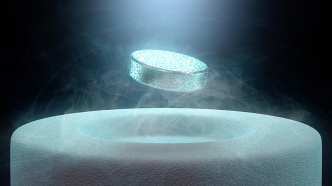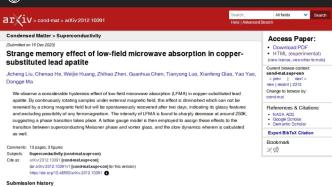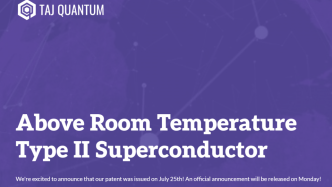
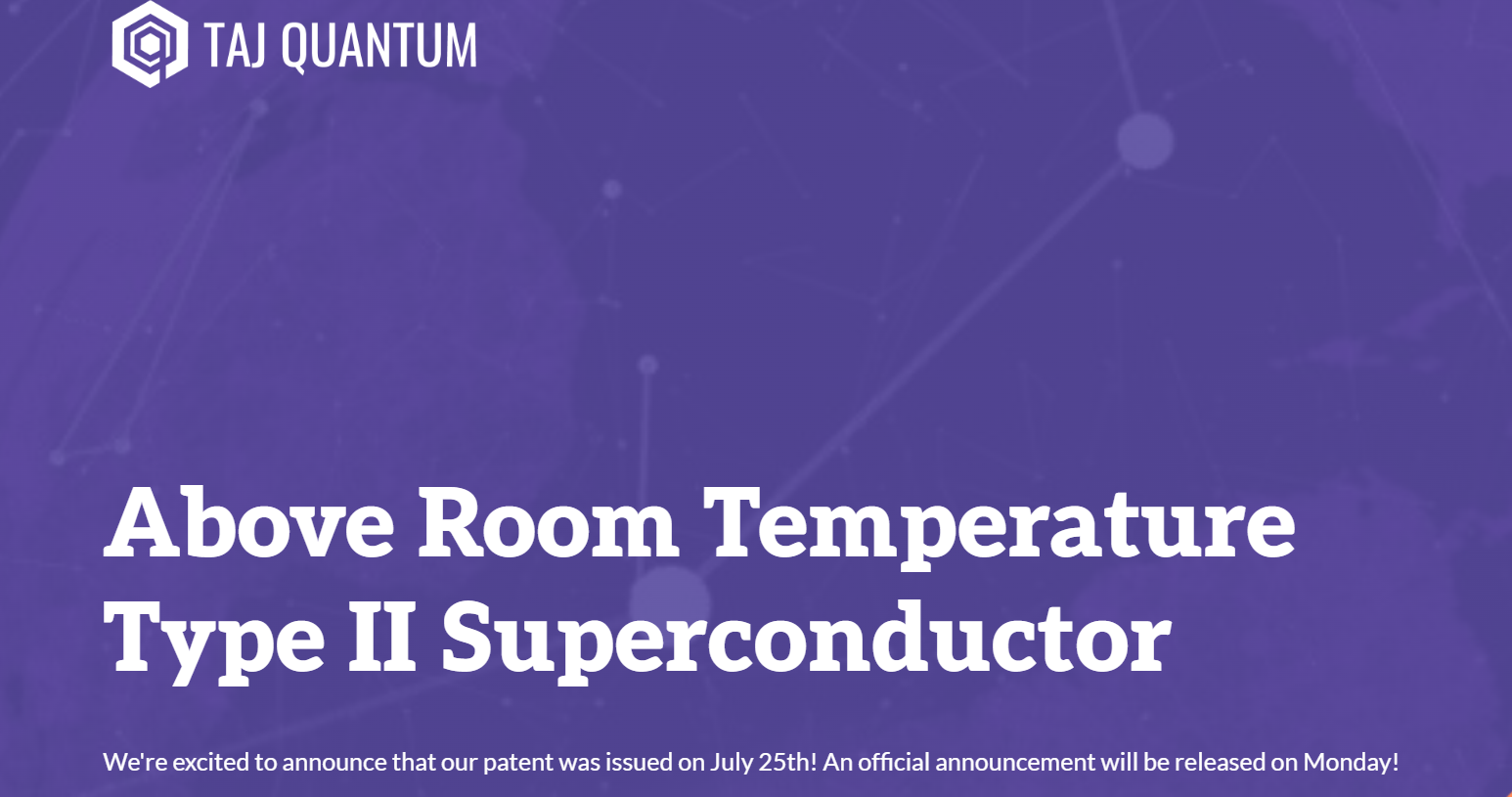
Tej Quantum posted on its official website and Twitter about the second type (Type II) superconductor, saying, "See you on Monday!"
"Whoever can discover superconducting materials at normal temperature and pressure can change the world!" People are working hard for this dream.
On July 30, another company claimed to have invented a room-temperature superconducting material. This is the second one recently.
In the Korean researchers' paper, copper-doped lead apatite LK-99 is the protagonist. But this time, graphene is the protagonist.
At 6:8 a.m. on the 30th, Taj Quantum, located in Orlando, Florida, USA, tweeted, "We are pleased to announce that we have finally been awarded the second category (category II) above room temperature. Patents for superconductors. Contrary to some recent paper reports circulating from Korea. Simply writing 'world first' in the title of a paper does not mean you are world number one. After more than two years of waiting, our patent was published on Weeks granted. Please read our patent from the USPTO website: …”
Its July 25 patent document states, "The present invention provides a class of Type II superconductors comprising aliphatic hydrocarbons or other suitable activation materials (i.e., nonpolar liquid, such as vacuum pump oil, silicone oil composed of methyl silicone, or aliphatic hydrocarbon chains bonded to the substrate by one end of the chain containing reactive functional groups) wetted perforated graphene . The superconductor of the present invention operates at It remains superconducting at a temperature (i.e. critical temperature), does not need to be kept at a low temperature, and can work in a strong magnetic field."
As of press time, the aforementioned tweets had been viewed more than 695,000 times.
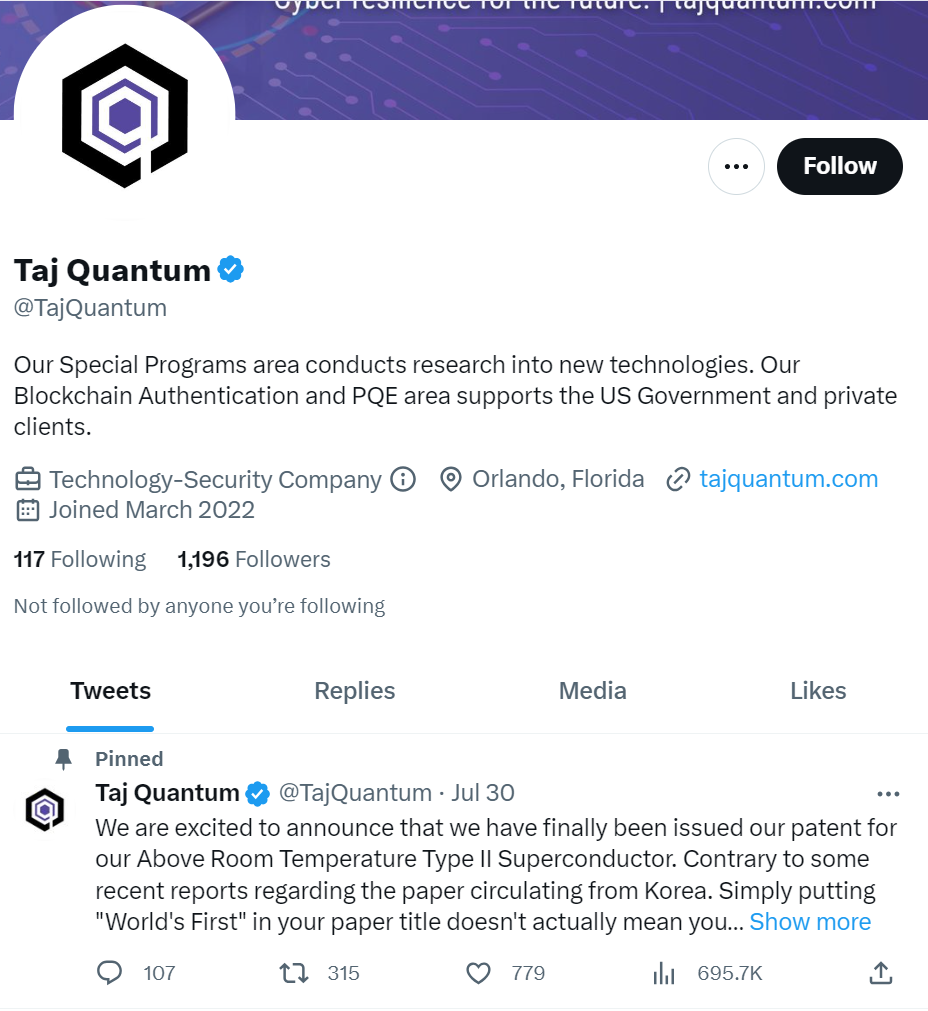
"After more than two years of waiting, our patent was granted last week," Tage Quantum said.
According to previous reports by The Paper, graphene is only one carbon atom thick (about 0.34 nanometers), so it is also called a two-dimensional quantum material. In 2004, British physicists Andre Geim and Konstantin Novoselov discovered that graphene can be obtained by repeatedly tearing off graphite with ordinary adhesive tape, so they won the 2010 Nobel Prize in Physics prize. Graphene has extremely high electron mobility, excellent mechanical strength, and excellent thermal conductivity.
Superconducting materials at room temperature and pressure may have a wide range of applications, making many people full of unlimited imagination. Some netizens commented, "Does this mean that I can finally buy a suspension car?"
However, in response to the news and patent documents released by the above-mentioned companies, an industry expert who studies Type II superconductors told Peng Mei Technology, "Patents are not counted, and generally do not need data to support () , so don't take it seriously."
In the comments, many netizens hoped that Taiji Quantum would publish photos or verification videos of the superconductor it invented. "See you on Monday!" the company posted on its website and on Twitter.
Due to time difference and other reasons, no more data or photos, videos and other information about the Type II superconductor released by the company have been found yet.
In layman's terms, superconductors can be divided into two types: the first type (Type I) superconductors have only one critical magnetic field, and the second type (Type II) superconductors have two critical magnetic fields. When the external magnetic field gradually increases, the superconducting state of the Type II superconductor will be partially destroyed until completely destroyed.
According to the Science and Technology Department of Nanjing University, in 2021, the team of Professors Wen Haihu and Yang Huan of Nanjing University observed the quantum oscillation behavior of magnetic flux bound states. According to the news, in Type II superconductors, when the external magnetic field exceeds the lower critical field, the magnetic field will enter the interior of the superconductor in the form of quantized magnetic flux.
Taiji Quantum’s official website states that, as a supplier, it can provide services such as encrypted and secure communications (video, voice, text, and video conferencing) and private/public blockchains for businesses or governments.
Earlier, on the morning of July 22, with a difference of about 2.5 hours, two similar papers were published on the preprint website, and the protagonists were both LK-99, a material that was claimed to be superconducting at room temperature and pressure. The two papers were uploaded successively by Young-Wan Kwon, a professor at Korea University, and Hyun tak Kim, a research professor of physics at the College of William & Mary in the United States. The signing unit of some of the signed authors is the Korea Quantum Energy Research Center. Relevant researchers have applied for an international patent for LK-99 in August 2022, and the patent will be granted in March 2023.
After the publication of the aforementioned two papers, a large number of researchers and science enthusiasts attempted to synthesize LK-99 and conduct verification experiments. But so far, no authoritative verification data has been publicly released.
According to previous reports by The Paper, the post-95 "genius boy" Cao Yuan is known as a graphene driver. In 2018, he caused a sensation in the international academic circle for his discovery of the superconducting angle of graphene, which opened up a new field of condensed matter physics research; subsequently, he won the William L. McMillan Award, the highest award for young physicists in the field of condensed matter physics in 2021. Its achievements in "discovery and exploration of superconductivity and related quantum phenomena in twisted bilayer graphene".
Cao Yuan was born in Chengdu, Sichuan in 1996. In 2010, 14-year-old Cao Yuan was admitted to the Juvenile Class Academy of the University of Science and Technology of China, and was selected into the "Yan Jici Physics Elite Class". During his study at USTC, Cao Yuan was awarded twice the Overseas Exchange Scholarship established or sponsored by the Xinchuang Alumni Foundation and the Guo Moruo Scholarship (the latter is the highest honor award for undergraduates at USTC). In 2014, he went to MIT as a graduate student, and in 2020 he received his Ph.D.
